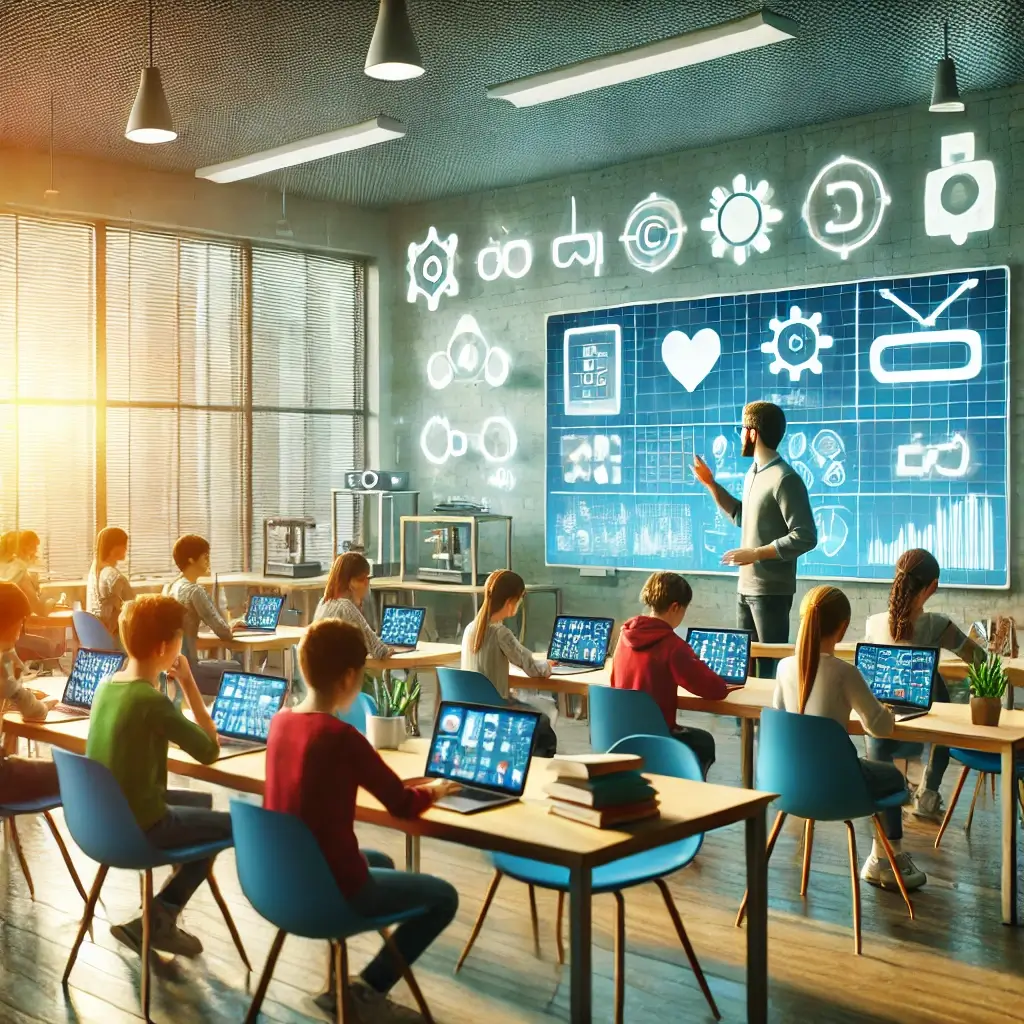-
How Digital Nomads Are Redefining Work and Lifestyle 🌍💻
Mar 06, 2025 | 38 Comments -
How Artificial Intelligence is Transforming Healthcare 🏥🤖
Mar 06, 2025 | 0 Comments -
How Cryptocurrency is Reshaping the Global Economy 💰🌍
Mar 06, 2025 | 0 Comments -
How to Build a Strong Personal Brand: Stand Out & Grow Your Influence 🚀📢
Mar 02, 2025 | 0 Comments -
The Power of AI in Business: How Artificial Intelligence is Transforming Industries 🚀🤖
Mar 02, 2025 | 0 Comments -
How Smart Homes Are Changing the Way We Live 🏡🔋
Mar 02, 2025 | 0 Comments -
How Electric Vehicles Are Revolutionizing Transportation 🚗⚡
Mar 02, 2025 | 0 Comments -
The Future of Renewable Energy: How Green Technology is Changing the World 🌍⚡
Mar 02, 2025 | 0 Comments

The Role of Technology in Modern Education
Technology has become an integral part of modern education, revolutionizing how students learn and how teachers deliver instruction. From online learning platforms to AI-powered tools, technology is shaping the future of education and making it more accessible, efficient, and engaging. This article explores the role of technology in education and its transformative impact on the learning experience.
The Evolution of Technology in Education
Over the years, technology has evolved from basic tools like calculators and projectors to advanced digital platforms and artificial intelligence. The integration of technology in education has accelerated, especially with the rise of the internet and mobile devices. Today, students and educators have access to a wealth of resources that were unimaginable a few decades ago.
Key milestones in the evolution of technology in education include the introduction of computers in classrooms, the advent of e-learning platforms, and the development of interactive tools that facilitate collaborative learning.
Benefits of Technology in Education
The use of technology in education offers numerous benefits for students, teachers, and educational institutions. Here are some of the most significant advantages:
- Enhanced Access to Information: The internet provides students with access to an extensive range of resources, including research papers, eBooks, and online courses, enabling self-paced learning.
- Improved Engagement: Interactive tools like quizzes, videos, and virtual simulations make learning more engaging and enjoyable for students.
- Personalized Learning: Adaptive learning platforms use data analytics to customize lessons based on individual student needs and progress.
- Collaboration Opportunities: Technology facilitates communication and collaboration through tools like video conferencing, shared documents, and virtual classrooms.
- Cost Efficiency: Online learning reduces the need for physical materials and infrastructure, making education more affordable for many students.
Key Technologies Transforming Education
Several technologies are driving innovation in education and changing the way students learn. These include:
1. Online Learning Platforms
Platforms like Coursera, Udemy, and Khan Academy have made education accessible to millions worldwide. These platforms offer courses on various subjects, often at little or no cost, providing opportunities for lifelong learning.
2. Artificial Intelligence (AI)
AI-powered tools are revolutionizing education by enabling personalized learning experiences. AI tutors, for instance, can analyze student performance and provide tailored recommendations to improve understanding.
3. Virtual Reality (VR) and Augmented Reality (AR)
VR and AR are making education more immersive. Students can explore virtual environments, such as historical landmarks or the human body, enhancing their understanding of complex concepts.
4. Gamification
Gamification incorporates game elements into learning to boost engagement and motivation. Tools like Kahoot and Quizizz use leaderboards, rewards, and challenges to make education fun and interactive.
5. Cloud Computing
Cloud-based tools enable students and teachers to access educational materials from anywhere, fostering flexibility and collaboration. Platforms like Google Workspace and Microsoft Teams are widely used in educational settings.
The Challenges of Integrating Technology in Education
While technology offers numerous benefits, its integration into education comes with challenges:
- Digital Divide: Not all students have access to devices or reliable internet, creating inequalities in learning opportunities.
- Teacher Training: Many educators lack the skills or training to effectively use digital tools in the classroom.
- Security and Privacy Concerns: The use of online platforms raises concerns about data security and student privacy.
- Overreliance on Technology: Excessive dependence on technology may lead to reduced critical thinking and interpersonal skills among students.
Best Practices for Using Technology in Education
To maximize the benefits of technology in education, it’s essential to adopt best practices:
- Blend Traditional and Digital Methods: Combine technology with traditional teaching techniques for a balanced approach.
- Provide Teacher Training: Equip educators with the skills and knowledge needed to use technology effectively.
- Focus on Accessibility: Ensure that digital tools and resources are accessible to all students, regardless of their background or abilities.
- Emphasize Digital Literacy: Teach students how to critically evaluate online information and use digital tools responsibly.
The Future of Technology in Education
The future of education is intertwined with technology. Innovations like AI-powered adaptive learning, blockchain-based credentialing, and advanced data analytics are set to redefine the educational landscape. As technology continues to evolve, it will create new opportunities for students, teachers, and institutions to thrive in a dynamic and connected world.
1 comments
Yusuf lawan bala Sep 06, 2025
Education is a knowledge to cenji parposer to the world
Your comment